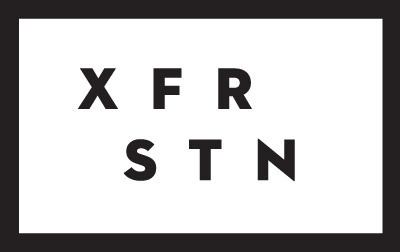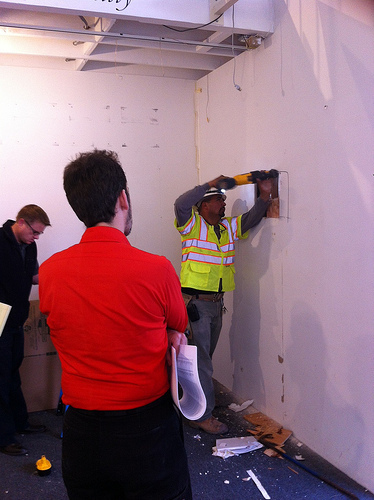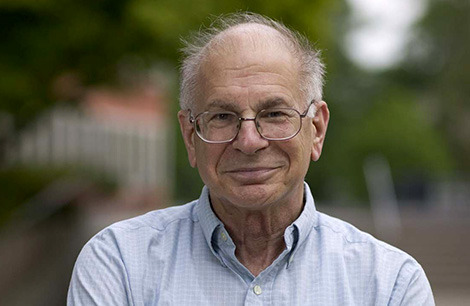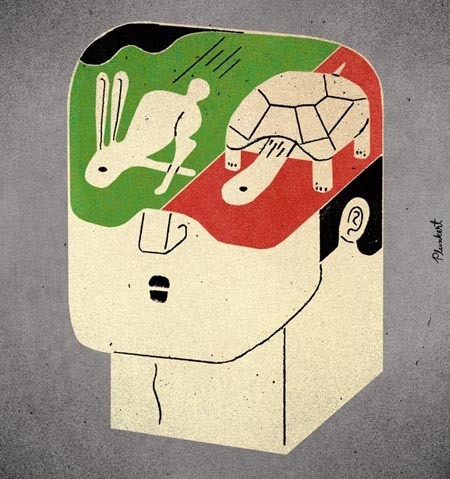Stewart Brand's Blog, page 67
August 19, 2013
Craig Childs Seminar Media
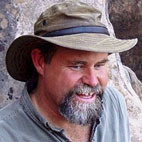 This lecture was presented as part of The Long Now Foundation’s monthly Seminars About Long-term Thinking.
This lecture was presented as part of The Long Now Foundation’s monthly Seminars About Long-term Thinking.
Apocalyptic Planet: Field Guide to the Everending Earth
Monday July 29, 02013 – San Francisco
Video is up on the Childs Seminar page for Members.
*********************
Audio is up on the Childs Seminar page, or you can subscribe to our podcast.
*********************
How the world keeps ending – a summary by Stewart Brand
“This Earth is a story teller,” Childs began. “And it is not a stable place to live. It is always ending. We think of endings as sudden, but it is always a process.”
For his book Apocalyptic Planet he sought out some of the world’s most terminal-feeling places, where everything is reduced to fundamental elements in total upheaval or total stasis, and a visitor is overwhelmed by the scale and power of a planet going about its planetary business.
In Yosemite Valley, where Childs was the day before he spoke in San Francisco, everyone is awed by the results of massive glacial action. In a sense Yosemite is the future of where he had been the previous week— a part of Alaska where the ice is 1,000 feet thick, with mountain peaks just visible above the glacial carving. Still further in the past is a classic end-of-the-world—an Ice Age. Childs sampled what that is like with an extended stay on the Greenland ice cap, where all there is for hundreds of miles is ice, sky, and wind. And numbing cold. The ice is 5,000 feet thick, moving under his camp at 1 foot a day, eventually calving off into enormous icebergs.
He was in Greenland with a chaos scientist studying climate change, who noted that complex systems like climate sometimes change suddenly, and that’s when you can’t predict what will happen next.
“I would like to backpack on Mars,” said Childs. For the local equivalent he hiked across the Atacama Desert in northern Chile, where it never rains. It’s been a desert for 150 million years. You walk across nothing but salt so hard it pings like steel. The sun blasts you all day and at night the water in your pack freezes solid. “You walk for days and you don’t see a single living thing, you’re on a dead planet, and then it gets really strange because pink flamingoes come flying in over your head. They’re there to strain brine shrimp out of water sources. You’re at the end of the world and there are flamingoes! You think, ‘Yeah, that’s what this planet is about.’”
To experience a world without biodiversity he hiked for days in cornfields in Iowa, where 90 percent of the state is monocrop corn and soybeans. Yet it took just two years for tallgrass prairie to be re-established in a site where corn growing was stopped.
In the lava fields of Hawaii he got a sense of planetary beginnings when the magma escapes, flowing like liquid incandescent metal, and everything starts over. Life is reseeded from what are called kipukas, bits of forest missed by the lava. Plunging into some new forest densely regrown on recent lava, he was instantly lost, buried in an orgy of jungle vegetation, no animals yet, and he realized that “The force of the living is more cunning than any devastation, ready to explode on whatever it touches.”
Subscribe to our Seminar email list for updates and summaries.

Peter Schwartz Seminar Tickets
The Long Now Foundation’s monthly
Seminars About Long-term Thinking
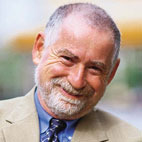
Peter Schwartz presents “The Starships ARE Coming”
TICKETS
Tuesday September 17, 02013 at 7:30pm SFJAZZ
Long Now Members can reserve 2 seats, join today! General Tickets $15
About this Seminar:
There is an appalling distance between here and the countless planets we’re discovering around stars other than our Sun. At first glance we can never span those light years. At second glance however…
“The 100-year Starship” is the name of now-culminating project that mustered a handful of scientists and science fiction writers to contemplate how humanity might, over the coming century, realistically develop the ability to escape our Solar System and travel the light years to others.
Participants included scientists such as Freeman Dyson and Martin Rees and writers such as Gregory Benford and Neal Stephenson. The professional futurist in the group was Peter Schwartz, who contributed scenarios playing out four futures of starship ambitions. To his surprise, exploring the scenarios suggested that getting effective star travel over the coming century or two is not a long shot. Even by widely divergent paths, it looks like a near certainty.
Schwartz’s SALT talk will report on the exciting work by the 19 participants and spell out the logics of his scenarios. The new book from the project, Starship Century: Toward the Grandest Horizon, will be available at the event.

August 14, 2013
Toward a Manual for Civilization
“We are as gods” because of our ancestors’ diligence. The promise of a technologically advancing future is predicated on millennia of accumulated knowledge. Civilization has taken a lot of work to build and it demands a great deal of know-how to sustain. And as modern life increasingly encourages specialization, familiarity across that accumulated knowledge’s breadth can wane. Our ability to collaborate is a strength, but beyond a point we risk losing comprehension of the infrastructure that supports our modern lives. How can we retain that knowledge?
Long Now Board Member Kevin Kelly has suggested a Library of Utility:
It would be a very selective library. It would not contain the world’s great literature, or varied accounts of history, or deep knowledge of ethnic wonders, or speculations about the future. It has no records of past news, no children’s books, no tomes on philosophy. It contains only seeds. Seeds of utilitarian know-how. How to recreate the infrastructure and technology of civilization so far.
Alexander Rose, our Executive Director, has compiled resources that could become such a Manual for Civilization:
It is an interesting thought exercise to ask yourself what information you might want if you had to truly start over.
And in our forthcoming Salon space at Fort Mason Center, we’ll house approximately 3,500 volumes in a floor-to-ceiling library featuring carefully selected books that could be used to help restart civilization. We are not trying to be apocalyptic or at all predictive, but the conversation that is inspired by this exercise seems to be endless and valuable.
We will collaboratively curate this corpus with Long Now’s members and the public. We understand that by definition we ourselves will have a western-centric viewpoint of what might be collected, but as the project gets going we plan to seek submissions that represent views from as many cultural viewpoints as possible. Several interns have been hired to begin rounding up submissions and our Digital Research Director, Kurt Bollacker, is advising on the information design, indexing architecture, and digital archiving strategy for the collection.
To support its long-term survival and worldwide accessibility, we’ll have a digital version of the collection publicly available on the Internet Archive. And, among its shelves, we’ll have many a great conversation – over tea, coffee, and maybe some whiskey – honoring curiosity, ingenuity and persistence. We hope you’ll join us.
If you share our enthusiasm for this project, please consider supporting the construction of the Salon space in which it will be housed – gifts for supporters include things like a free beverage once the space opens or having a shelf of the Manual’s books dedicated in your honor!

August 13, 2013
Scientists recover 700,000-year-old genome
There’s an upper limit to how long DNA can last due to the way it decays – dinosaurs, for instance, lived far too long ago for their DNA to still be readable – but scientists recently recovered and sequenced a genome 10 times older than the previous oldest.
The genetic material comes from a horse that lived 700,000 years ago:
Researchers have reconstructed an ancient genome that is 10 times as old as any retrieved so far, and they now say that DNA should be recoverable from animals that lived one million years ago. This would greatly extend biologists’ ability to understand the evolutionary past.
The genome was that of a horse that lived about 700,000 years ago in what is now the Yukon Territory in Canada, and its reconstruction has already led to new insights.
No species that lived more than about a million or so years ago could have left DNA that will still be recoverable, but this discovery potentially widens the window for de-extinction by quite a bit.

August 12, 2013
Art & The Art of Archiving at New York’s New Museum
From July 17 to September 8 of this year, the New Museum on Manhattan’s Lower East Side is hosting XFR STN (read ‘transfer station’), an “open-door artist-centered media archiving project.”
A collaborative effort by artists for artists, XFR STN is essentially a preservation and migration service for artwork created with or on audiovisual and digital formats that have since become obsolete. The migrated works will be available publicly through the Internet Archive, and on view at the New Museum’s fifth floor gallery space.
Part public exhibit and part archival laboratory, XFR STN is turning the preservation of art itself into a creative process. It’s an effort at saving art from digital darkness – not only by ensuring its continued accessibility, but by keeping it alive in the public eye.
“Consistent with the dictum “distribution is preservation,” the project argues for circulation as a mode of conservation. “XFR STN” will serve as a collection and dissemination point for artist-produced content, as well as a hub for information about these past projects (including production materials and personal recollections). The project is both a pragmatic public service and an activity as metaphor: an opportunity to present aspects of a mediatic production process in continuous dynamic transformation.”

August 8, 2013
Long Now Salon Design and Building Partners: Because We Can
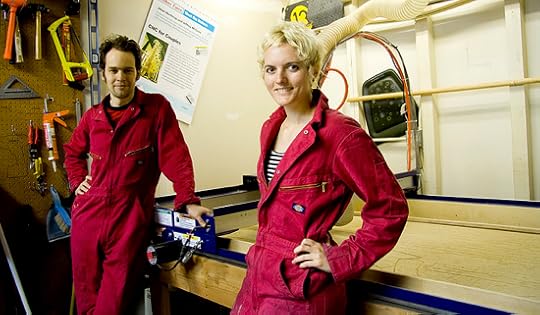
Because We Can co-owners Jeffrey McGrew and Jillian Northrup
As we begin construction of The Long Now Salon, we thought it was a good time to tell you more about the company we’ve collaborated with to envision and construct our San Francisco public space.
Local design-build firm Because We Can, led by co-owners, architect Jeffrey McGrew and interior designer Jillian Northrup, have collaborated with Long Now to design the Salon interior. Because We Can serve as architects and designers for the Salon, and they are also producing finished furniture and interior design elements built in their own digital fabrication enabled workshop in Oakland.
Here’s what they had to say about the experience of working on the Long Now Salon project:
As with all our clients, we worked really hard to capture what Long Now is all about in our designs. Our love of the mission and ideas, as well as the amazing prototypes for the Clock and other projects, have really driven the project to date. It’s been fantastic to work with a client that is so committed to getting it right!
Something we love about how Because We Can works: they use a sophisticated digital design process but also pay attention to every detail in the finished physical product. The Salon designs above were created from the same 3D model software they use to produce plans for the permits and building of the project. So it’s not conceptual art, but a future snapshot of what we are actually building.
Because We Can have been involved from very early in the project. They’ve worked on the overall design as well as details like the library shelves, the bottle chandeliers and how to incorporate Long Now’s Clock prototypes into the public space. They’ve also designed within the constraints of our historic Fort Mason site, including architectural aspects dating to its use as a blacksmith shop in World War II.
And as Salon construction begins they continue to oversee the project. Here’s Jeffrey on-site for early demolition work.
Because We Can’s portfolio includes high profile work for Maker Faire, The Exploratorium, Stanford D-School, Clif Bar and Wikimedia Foundation amongst many others since 02007. They have designed both formal and informal spaces with a balance of practical and whimsical details.
Versatility and attention to detail are key to creating a space like ours which will play such diverse roles: museum, cafe, event space, bar, and library. We trust Because We Can to assure that the big concept matches the little details. The goal is something that is beautiful, cohesive and fun, with details that reward curious attention. There’s even a secret door in the library shelves which serves as the entrance to the Long Now offices.
As The Long Now Salon has taken shape from our initial concept of a place that inspires great conversations, Because We Can have been indispensable collaborators in bringing the Salon to life. You can see more of their previous work here and in the images below.

Because We Can designed nomAD art gallery kiosks in San Jose

Detail of table legs for the Penny Arcade offices

Believe it or not this Long bench wasn’t for Long Now, but for Sunpower of Richmond, CA.

Their first project of many for Maker Faire was building these now iconic chairs

Frames for rolling projection screens made for The Stanford “d.school” Institute of Design

Jillian works in the Because We Can shop in Oakland
Learn more about the Salon and our crowdfunded ‘brickstarter’ campaign. You can help us build it with a tax deductible gift. Look for images and information from the ongoing construction, very soon.

August 6, 2013
Daniel Kahneman Seminar Primer
Tuesday August 13, 02013 at the Marines Memorial Theater, San Francisco
Daniel Kahneman is one of the world’s foremost psychologist. Back in the early 1970s, Kahneman and his research partner, Amos Tversky, “set out to dismantle an entity long dear to economic theorists: that arch-rational decision maker known as Homo economicus”. Their research led to a new compendium of human error and bias, and formed a new field called “prospect theory“, for which the duo won the Nobel Prize in economics in 2002.
In his 2011 book, Thinking, Fast and Slow, Kahneman summarizes decades of his research in behavioral economics and breaks thought into two general categories, System 1 and System 2. System 1 is what we usually associate with intuition, immediate reaction, and fast thinking. The system has relative advantages and disadvantages–one can save time and energy by using this system, yet this system often falls victim to stereotyping, visceral reactions, and general biases. System 2 occupies the other end of the spectrum. When we are thinking using this system, we are retrieving information, questioning our first answer, and slowly honing in on a balanced and informed opinion.
Rather than take the easy route of disparaging “fast thinking” in favor of “slow thinking”, Kahneman is careful to show how each has their relative strengths. Even though System 2 is often superior to System 1 in thinking about complex issues, Kahneman points out that self-control is linked to the same cognitive resources used during slow thinking. To use but one example: during a study where some participants were asked to memorize seven numbers and then asked if they would like a “virtuous” fruit salad or “sinful” chocolate cake, the participants that were negotiating the cognitive load of memorizing the seven numbers were less likely to exhibit self-control and chose the cake. We each have a reservoir of self-control/decision power, and we use System 1 to offset decisions that needlessly drain this reservoir.
Daniel Kahneman goes beyond pop-psychology to explain how we actually think, the promise and peril of different types of thinking, and how to train your mind to recognize what type of thinking is needed. Part of Long Now’s mission is to make long-term thinking as automatic and common as short-term thinking is now. Part of that battle will be on a societal level, but another part of the battle will be within our own heads, and Kahneman provides a map to thinking in the long-term. To learn more about the cognitive biases that drive different types of thinking, come see Daniel Kahneman at Marines Memorial Theatre on Tuesday, August 13th.

August 5, 2013
The End of (xkcd’s) Time
The stories told in comics can range from decades-long epics to a single wordless image. Though Randall Munroe’s web comic xkcd has tended toward the shorter end of this vast spectrum, he recently concluded a narrative arc that unfolded over several months in the form of Time.
Starting off as a couple stick figures sitting on the beach and the instruction to “Wait for it…”, the image automatically updated in a kind of super-slow animation that followed the characters on a journey of discovery. Readers (viewers?) had little explanation to go on and began looking for clues and forming theories about the story’s setting and direction. A frame showing the night’s sky allowed astronomy buffs a chance to show that the story seemed to be taking place thousands of years into the future (just as we hope the 10,000-Year Clock’s face will prove useful). Munroe confirmed exactly that in a post on his blog once the story had concluded:
And as Time unfolded, readers gradually figured out that it was a story, set far in the future, about one of the strangest phenomena in our world: The Mediterranean Sea sometimes evaporates, leaving dry land miles below the old sea level … and then fills back up in a single massive flood.
Wired explores even further the research Munroe put into his story, including geographically appropriate flora and fauna, as well as creating a constructed language:
With the help of a linguist, Munroe invented a language and orthography (dubbed “Beanish” by readers) for one of the foreign cultures his characters encounter, which he wanted to be “as different from [English] as our language is from Linear A or Linear B,” the still-undeciphered writing systems of ancient Crete. His abstruse approach worked; despite the efforts of “Time” superfans, no one has been able to decode the language, which Munroe finds fitting since “we haven’t cracked Linear A, either!”
Time chronicles a cataclysmically accelerated event in an uncharacteristically patient, ponderous style. Here’s the whole thing, turned into a video:

Craig Childs Seminar Media
 This lecture was presented as part of The Long Now Foundation’s monthly Seminars About Long-term Thinking.
This lecture was presented as part of The Long Now Foundation’s monthly Seminars About Long-term Thinking.
Apocalyptic Planet: Field Guide to the Everending Earth
Monday July 29, 02013 – San Francisco
Audio is up on the Childs Seminar page, or you can subscribe to our podcast.
*********************
How the world keeps ending – a summary by Stewart Brand
“This Earth is a story teller,” Childs began. “And it is not a stable place to live. It is always ending. We think of endings as sudden, but it is always a process.”
For his book Apocalyptic Planet he sought out some of the world’s most terminal-feeling places, where everything is reduced to fundamental elements in total upheaval or total stasis, and a visitor is overwhelmed by the scale and power of a planet going about its planetary business.
In Yosemite Valley, where Childs was the day before he spoke in San Francisco, everyone is awed by the results of massive glacial action. In a sense Yosemite is the future of where he had been the previous week— a part of Alaska where the ice is 1,000 feet thick, with mountain peaks just visible above the glacial carving. Still further in the past is a classic end-of-the-world—an Ice Age. Childs sampled what that is like with an extended stay on the Greenland ice cap, where all there is for hundreds of miles is ice, sky, and wind. And numbing cold. The ice is 5,000 feet thick, moving under his camp at 1 foot a day, eventually calving off into enormous icebergs.
He was in Greenland with a chaos scientist studying climate change, who noted that complex systems like climate sometimes change suddenly, and that’s when you can’t predict what will happen next.
“I would like to backpack on Mars,” said Childs. For the local equivalent he hiked across the Atacama Desert in northern Chile, where it never rains. It’s been a desert for 150 million years. You walk across nothing but salt so hard it pings like steel. The sun blasts you all day and at night the water in your pack freezes solid. “You walk for days and you don’t see a single living thing, you’re on a dead planet, and then it gets really strange because pink flamingoes come flying in over your head. They’re there to strain brine shrimp out of water sources. You’re at the end of the world and there are flamingoes! You think, ‘Yeah, that’s what this planet is about.’”
To experience a world without biodiversity he hiked for days in cornfields in Iowa, where 90 percent of the state is monocrop corn and soybeans. Yet it took just two years for tallgrass prairie to be re-established in a site where corn growing was stopped.
In the lava fields of Hawaii he got a sense of planetary beginnings when the magma escapes, flowing like liquid incandescent metal, and everything starts over. Life is reseeded from what are called kipukas, bits of forest missed by the lava. Plunging into some new forest densely regrown on recent lava, he was instantly lost, buried in an orgy of jungle vegetation, no animals yet, and he realized that “The force of the living is more cunning than any devastation, ready to explode on whatever it touches.”
Subscribe to our Seminar email list for updates and summaries.

August 2, 2013
Long Bets Table at WorldFuture2013
From July 19th- 21st in Chicago, the World Future Society hosted their annual conference, WorldFuture 2013. The conference had over 60 sessions, workshops, and special events over the course of two and a half days, including a keynote from former SALT speaker Nicholas Negroponte. Topics ranged from Artificial Intelligence and the future of education to gaming and politics.
This year, Long Now hosted a table on Long Bets. For the weekend, we waved the $50 prediction fee and gave conference guests the chance to make predictions for free. The table generated much interest and led to predictions on topics as diverse as urban farming and the future of libraries.
One of the keynote speakers and Long Now member, Ramez Naam, paid the table a visit and made two predictions, both of them concerning our environmental future:
“The first ice-free Artic day (as defined by NSIDC) will occur by the end of 2020.”
Wendell Wallach, a bioethicist at Yale and presenter at the conference, made a controversial prediction concerning the timeline of fully autonomous cars:
To see the predictions from the conference and other recent predictions, visit the Long Bets site. If you find yourself in disagreement with any of the predictions, join the conversation by creating an account and challenging the prediction.

Stewart Brand's Blog
- Stewart Brand's profile
- 291 followers





